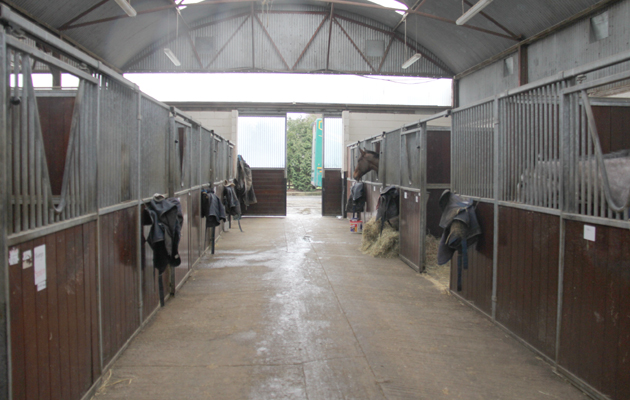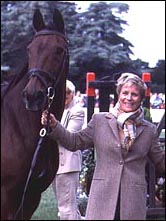
Three horses have been found wounded and “traumatised” after a break-in at a Riding for the Disabled Association centre.
Volunteer Joe Coulman made the discovery when he arrived at the Epsom centre on Wednesday morning (15 August).
Epsom RDA centre chairman Stella Milne told H&H the incident happened between 10pm on Tuesday (14 August) and 7.30am on Wednesday.
“We keep two of our ponies, Marigold and Buffy, in the indoor school at night because they are susceptible to laminitis. Joe arrived and found Buffy wasn’t in the school,” she said.
“In the school, water buckets and poles were everywhere. The first aid kit had been strewn all over the place and electric fence posts had been broken and left lying around.”
The 24-year-old ponies, Marigold and Buffy, were both found with injuries and the vet and police were called.
“Marigold had seven puncture wounds on her body and Buffy had two. It also appears that Marigold has wounds on her legs, which we think could have been caused by a dog and we are assuming the puncture wounds could have been made with the electric fence poles.
“Marigold’s wounds are deep but not life-threatening, but she has one at the top of her jaw adjacent to her eye, which we are worried about. There could be a fracture there and the vet is coming back again tomorrow to X-ray.
“The wound on Buffy’s neck has luckily missed the bone but the puncture wound on her near fore is quite deep and was still hot and puffy this morning so the vet will look at her again tomorrow.”
A 19-year-old gelding was found in a different field with a similar injury.
“We then found Samuel, who had a puncture wound on his shoulder,” Stella said. “Luckily it hadn’t gone down to the bone. There were wheelbarrows strewn around the field but the other two horses in that field were uninjured.
“Marigold had hand prints in blood on her body; it was just horrible. You just can’t fathom how people could do that, it’s shocking.
“These ponies aren’t young and they do a great job for us, Marigold has been a national RDA champion at Hartpury three times with several of our riders, she’s been absolutely brilliant. Buffy is a very steady pony – she is always eager to do her job and look after her rider. It’s just so sad.”
“Marigold is finding it difficult to eat soaked hay with her painful jaw but apart from that she’s a feisty little lady and perking up more, on the other hand Buffy seems to be the most traumatised.”
Volunteers at the centre spent Wednesday evening on site.
“A group of volunteers did a rota last night and offered to stay in the coffee room so we had somebody there all evening,” Stella said. “Over the coming days we are looking to have a security firm on site with a dog and in the future we will be looking at CCTV and any other security measures that can be improved on,”
Horse attacked in West Midlands
Livery yard owner issues warning after savage horse attack
Donkey stabbed in fight makes good recovery
The four-year-old animal sustained two stab wounds when caught up in a row between two farmers
Owners distraught after two ponies stabbed to death in Wales
Aron Beck and Heather Baker are distraught after their daughter’s two ponies were found stabbed to death in a field…
Stella said the veterinary bills and added security costs will have an “impact” on the centre.
“We’ve had tremendous support from people on social media and the local Epsom community — we want to thank everybody,” she added. “People are really rallying round, they have been coming into the yard with carrots and chocolates and making donations. There is outrage that people could do this to these innocent animals.”
A spokesman for Surrey Police said investigations are ongoing.































